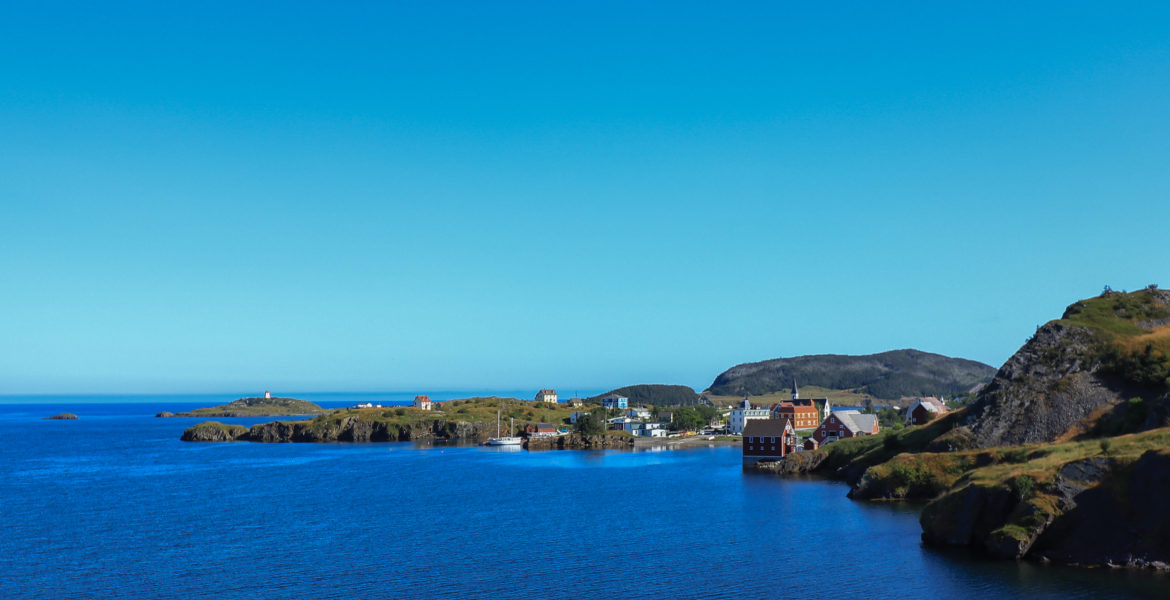
Newfoundland: Treading on Thin Lines
On byIt is often hard to keep your eyes on the road when driving along the coast of Newfoundland. Rolling hills, stoic fjords, and the sight of the vast blue ocean can, and will, steer you off course. With no dangers on a populated highway, it is common to find a car pulled over for someone taking a shot of the scenery, or simply soaking up the serenity of the landscape. When secluded, one can find themselves lost in awe. Left wild and still untouched, we often value the beauty of these landscapes, but we overlook the environmental values that these spaces provide.




The Newfoundland Grand Banks were known to be the world’s most productive fishing area [1]. It is also common to discover quaint fishing villages located farther away from the major cities. Many signs and landmarks can be found throughout these villages which displays the area’s history and significance towards the growth of Newfoundland. Accompanying these landmarks are boats and houses painted in vibrant colors, and are often abandoned alongside old and damaged fishing gear. The sight of abandonment and broken architecture makes small villages seem quirky and well-aged, however those houses, boats, and gear that once belonged to someone are now landmarks of history. Evidence of the collapse of Atlantic cod can be seen in the towns and villages throughout the province.




In the late 60s, cod catch reached peak heights of up to 800,000 tonnes; it seems that it is almost human in nature to overlook such limited resources as inexhaustible. By the year 1975, cod catch returns declined by 60 percent. In response to this decrease, the Canadian government implemented restrictions such as limiting foreign fishing vessels within a certain distance from the coast and placing an annual catch restriction to save cod populations. The collapse began in the early 1990s when a moratorium was placed due to overfishing of cod [2]. This resulted in around 40,000 fishermen across the Canadian east coast being put out of work. As of now the moratorium is still active. Recreational fishing is permitted; however, it is restricted to 39 days of the year as of 2018 [3], and licenses from commercial ground fish are limited entry licensing [4].





It generally takes seven to eleven years for species of Atlantic cod to mature [5]. If the fish manages to survive predators, abiotic factors, and being caught as bycatch by the age of maturity, then spawning can occur and a female can produce several million eggs. Only one egg per million will manage to survive till maturity [6]. All of these factors make cod recovery limited, however, strict regulations are somewhat slowing down the total loss of cod. Though there is still a lack of population recovery, it is suggested by scientists that the next projected population bloom would occur in the near-coming hemispheric cooling cycle between 2015 and 2030 [7]. This window is not only providing optimal conditions for cod populations to rebound, but also provides an opportunity for our society to improve our conservation strategies towards cod population and sustainable fisheries. Newfoundland was known globally for its abundance of Atlantic cod; whether that statement will prevail within the next decade or remain historical, is yet to be confirmed.

[1]Green Peace. 2009. The collapse of the Canadian Newfoundland cod fishery. Retrieved from http://www.greenpeace.org/archive-international/en/campaigns/oceans/seafood/understanding-the-problem/overfishing-history/cod-fishery-canadian/
[2]Higgings, J. 2009. Newfoundland and Labrador Heritage. Retrieved from https://www.heritage.nf.ca/articles/economy/moratorium.php
[3] Haig, T. 2018. More bad news for Canada’s East Coast cod fishery. Retrieved from http://www.rcinet.ca/en/2018/06/13/more-bad-news-for-canadas-east-coast-cod-fishery/
[4]Fisheries and Oceans Canada. 2018. 4VWX5 groundfish – Maritimes Region. Retrieved from http://dfo-mpo.gc.ca/fm-gp/peches-fisheries/ifmp-gmp/groundfish-poisson-fond/groundfish-poisson-fond-4vwx5-eng.htm
[5]Langangen, O., et al. 2018. Ticket to spawn: Combining economic and genetic data to evaluate the effect of climate and demographic structure on spawning distribution in Atlantic cod. Global Change Biology 25: 134-143.
[6]Fisheries and Oceans Canada. 2016. Atlantic Cod (Newfoundland and Labrador population). Retrieved from http://dfo-mpo.gc.ca/species-especes/profiles-profils/atlantic-cod-morue-nl-tnl-eng.html
[7]Sharp, G. D. 2011. Dean Bavington: Managed annihilation: an unnatural history of the Newfoundland cod collapse. Agricultures and Human Values 28: 457-458.
Published on the Outside-In International Photojournal 2018-19 edition.
https://issuu.com/outsideinjournal/docs/outside-in_2019__-_final__issuu_
(c) evergreen-evermore.com All Rights Reserved